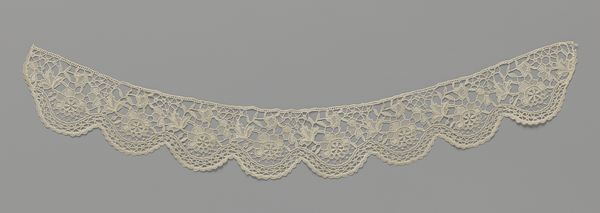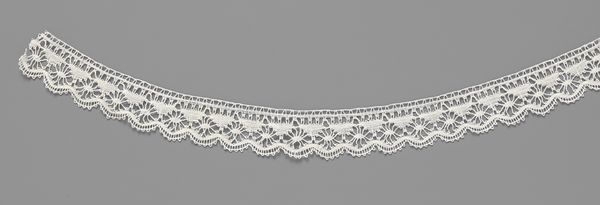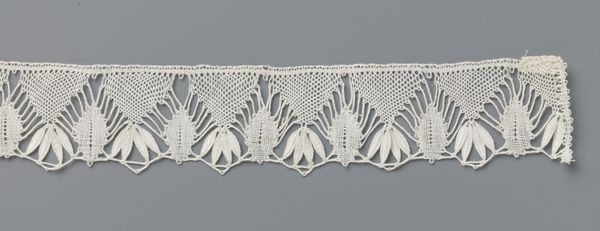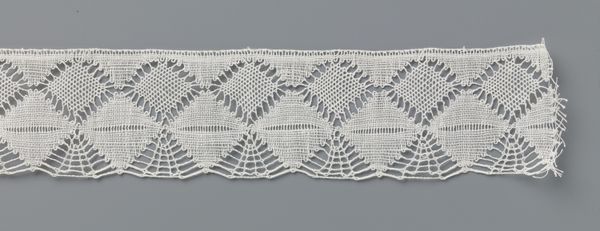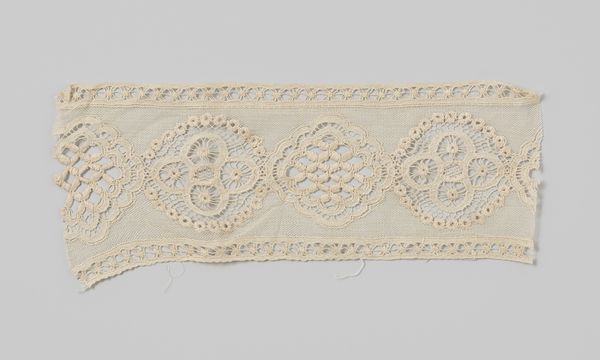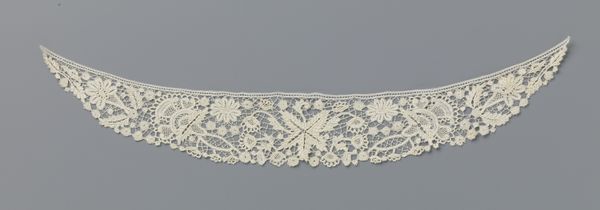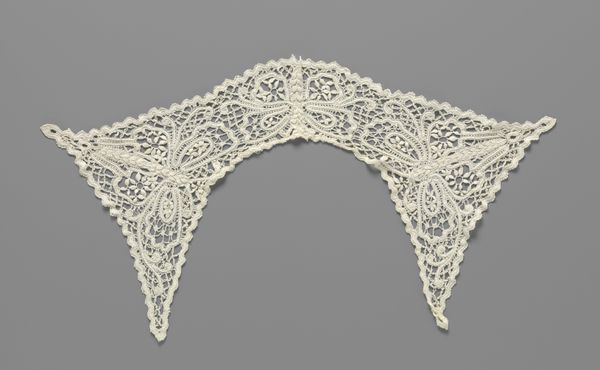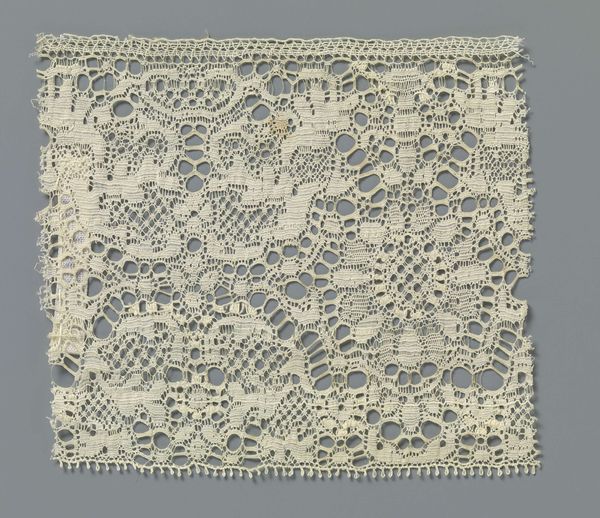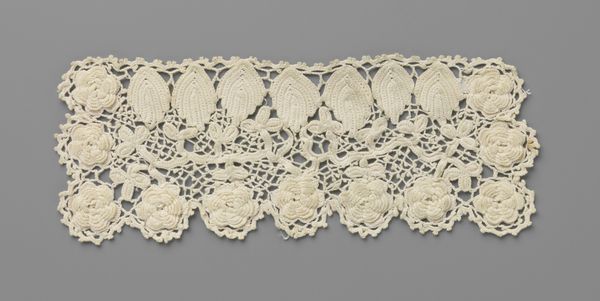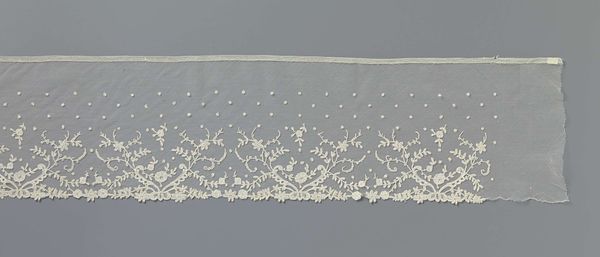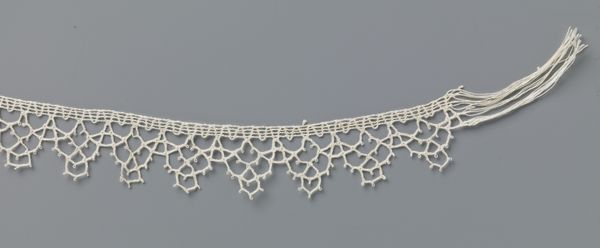
fibre-art, textile
#
natural stone pattern
#
fibre-art
#
textile
#
hand-embroidered
#
pattern design
#
repetitive shape and pattern
#
organic pattern
#
intricate pattern
#
regular pattern
#
pattern repetition
#
decorative-art
#
layered pattern
#
combined pattern
Dimensions: length 69 cm, width 54.5 cm
Copyright: Rijks Museum: Open Domain
Editor: This is "Strook kant," a piece of lace made around 1898 by an anonymous artist. It’s really delicate; all these small floral patterns give it a kind of ethereal, almost dreamlike quality. How would you interpret this work, looking at the patterns and how they interact? Curator: It speaks to me of continuity. Consider lace's historical role, often associated with rites of passage: christenings, weddings, even funerals. These motifs--primarily floral, wouldn't you agree?-- have been enduring symbols of both celebration and mourning for centuries. How does that interplay strike you? Editor: That's interesting; I was only thinking of the positive associations. It feels so optimistic, with the flowers and the airy structure of the lace. Curator: Precisely. Lace walks this liminal space between fragility and endurance. Think about the labor involved; countless hours spent creating something so intricate yet so easily torn. What cultural echoes might resonate from that tension? Editor: Maybe it symbolizes the way we try to create lasting beauty, even knowing things won't last forever. Or perhaps the repetition in the pattern signifies cycles... birth, death, rebirth? Curator: Excellent! These visual echoes ripple outwards, touching upon broader themes of temporality and the enduring human drive to create meaning. See how symbols function, less as fixed definitions, and more as launching points for dialogue? Editor: That makes so much sense. I’ll never look at lace the same way again. I really appreciate your highlighting those cultural and symbolic aspects. Curator: My pleasure. The past speaks, if we only learn to listen through the images.
Comments
No comments
Be the first to comment and join the conversation on the ultimate creative platform.
